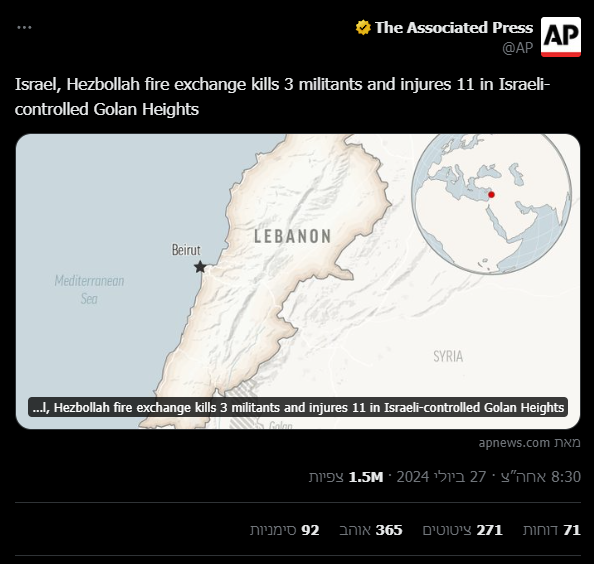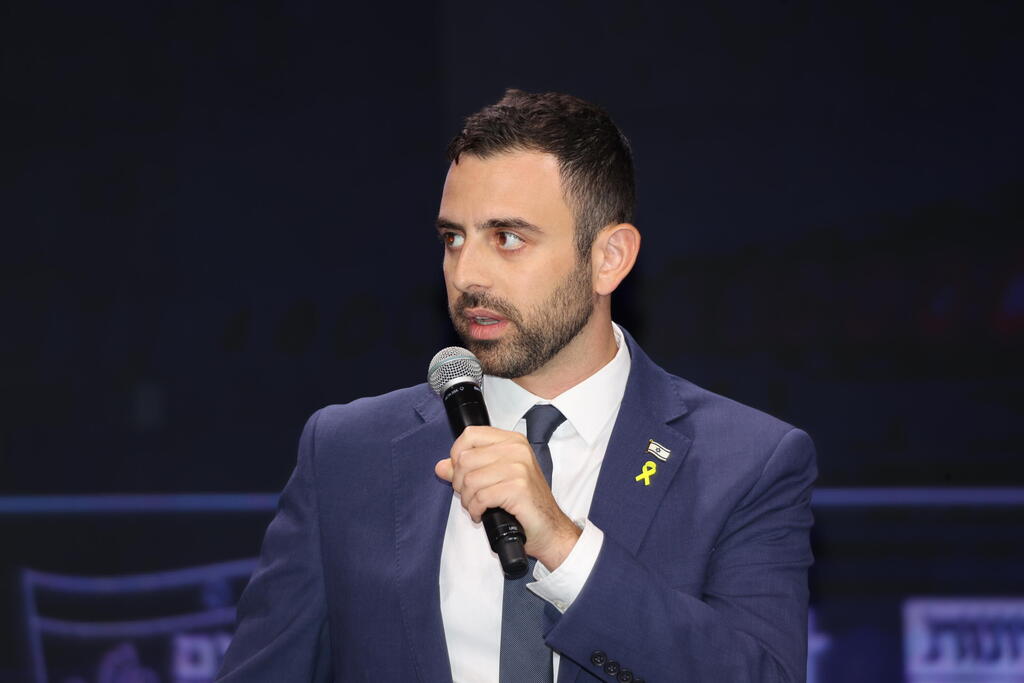Getting your Trinity Audio player ready...
Since the massacre in Majdal Shams, where 12 children and teenagers were killed by a Hezbollah rocket, there has been a claim that Israel missed a rare opportunity to shift the narrative in the propaganda war against the terrorist organization and Iran. The global media reported the incident as an attack on occupied territory, with almost no blame placed on the actual culprits: Hezbollah and Iran. So, was this a failure of Israel's propaganda apparatus?
Firstly, global public opinion and international media can't focus on two fronts in the same country - the south and the north. Additionally, over the past ten months, the official State of Israel has focused primarily on the Gaza Strip and legitimizing actions there. This was the directive from the political echelon. Therefore, all propaganda efforts since October 7 have been directed toward the southern front.
Only in the last two months has there been increased exposure to Hezbollah's activities in the north. Previously, Israel was preoccupied with the horrors of Hamas, the hostages, and cases of rape, and the north was an afterthought. Many media outlets and journalists suddenly discovered that there was an active northern front, but because the tragedy and drama paled in comparison to what was happening in Gaza, the issue was covered with low intensity.
The fact that the victims were Druze and Arabs living in Israel, in an area perceived by some countries as occupied, only complicated matters. Global media initially found it hard to understand these were Israelis in every sense. The issue is complex, and international media struggles to break down complex topics. They often see things in black and white - Jews versus Arabs, for instance. This complexity is hard for them to grasp.
AP led the anti-Israel narrative, reporting on the Majdal Shams incident with the absurd headline: "Israel-Hezbollah exchange of fire kills three militants, wounds 11 in Israeli-controlled Golan Heights." The AP tweet garnered 1.5 million views. Subsequently, many media outlets worldwide used AP's report, shaping a problematic narrative.
However, Israel was not without its own significant mistakes. It seems there was a severe failure in the propaganda apparatus for not distributing visual materials to all entities meant to represent Israel. The English page of the Prime Minister's office did not upload any images from the attack scene, only the Prime Minister's statement and the fact that he was being updated on the matter.
The IDF's English page first uploaded visual materials from the attack scene only at midnight between Saturday and Sunday. Initially, there was only one image from the attack scene, followed later by a picture of the children killed by the Iranian rocket and a photo of IDF Chief of Staff Herzi Halevi visiting Majdal Shams. Additionally, IDF spokesperson debunked Hezbollah's claims that it was not behind the deadly rocket launch.
The first to upload visual materials, including videos and pictures from the event, was the Foreign Ministry. On Saturday at 19:30, their first tweet was posted. Throughout that evening, night, and the following day, many visual materials from the attack scene were uploaded, along with personal stories and connections to Hezbollah and Iran.
Many of those were taken from Telegram or other online sources, not official materials. In the first 36 hours after the attack, the Foreign Ministry posted over 393 posts and tweets, which garnered more than 30 million views in five languages: English, Arabic, Spanish, Persian, and Russian. Posts on X received over 16 million impressions, while on Instagram, they received over 10 million. Additionally, embassy accounts posted tweets and posts in local languages, receiving hundreds of thousands of likes and views.
The difference between the propaganda apparatus and the Foreign Ministry is that the ministry operates on its official platforms and through its global representations, while the apparatus operates covertly, distributing materials through influencers - a kind of "covert propaganda." The apparatus cited an Instagram post by Jewish-American musician Matisyahu about the massacre in Majdal Shams as an example.
The moment of the fall
PR expert Eylon Levy told Ynet, "The propaganda battle is tough, but outside the IDF spokesperson, it seems Israel has abandoned the field. This field is critical for our diplomatic standing. The state needs a propaganda apparatus that can operate like a crisis management command center, deploying a legion of spokespeople in various languages. Not just reacting to events, but also pushing to the forefront of cameras. The disappointing coverage is also reflected in the diplomatic arena, where senior officials avoid explicitly blaming Hezbollah or demanding an end to Iranian aggression. The message must be heard from the highest levels: Israel will not tolerate attacks from Iran and its terror armies on seven fronts, and demands an end to this aggression."
Officials in the National Propaganda Apparatus dismissed the criticism, stating: "We released explanatory videos with visuals from the disaster scene and photos of the victims two hours after the event, targeting influencer and propaganda activist audiences. It received 1.2 million views. Its effectiveness is greater than any official image. There is ongoing activity. Just in July, our content received over 160 million views."
They added, "There was extensive activity around the Majdal Shams event - foreign press briefings, journalist tours, targeted campaigns, a video from the Government Press Office that was distributed, and more. Most of the propaganda apparatus's content is unofficial because the goal is to create impact among target audiences. We immediately intervened with media that removed responsibility from Hezbollah, trying to leverage this event as preparation for future actions. In some places, we succeeded, and the activity continues. We disagree with the claim that the event was missed from a propaganda standpoint. Extensive propaganda work was done around the event in Majdal Shams."
A senior PR official commented, "It's very frustrating. We could have been on the ground that very night, bombarding the world with news about the terrible event. We lost the narrative because we were slow."







